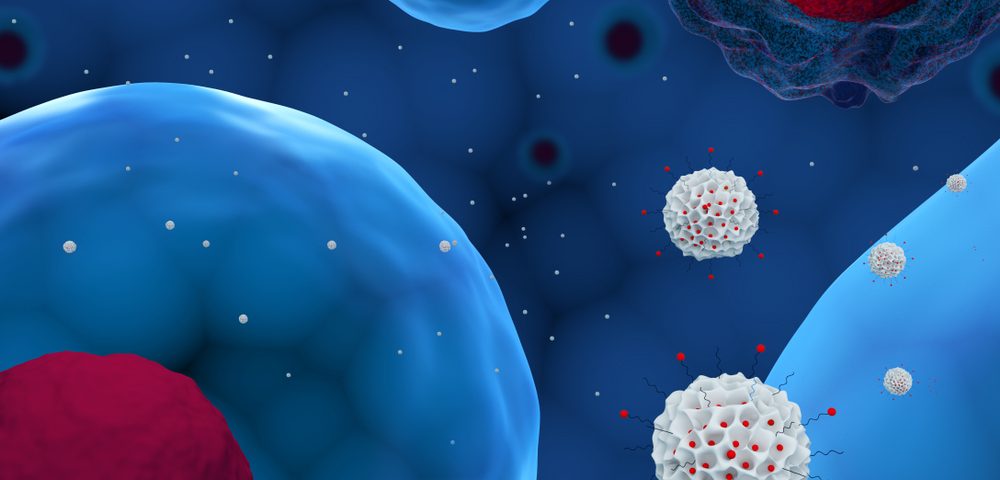Very few cancer cells within a triple negative breast tumor (TNBC) are able to spread and grow in distant organs (metastasize), although most are able to shed from the original tumor and be resistant to therapy, a new technique called cellular barcoding has shown.
Combining this advanced tool with animal models transplanted with patient-derived tumors, researchers at the Walter and Eliza Hall Institute of Medical Research in Australia have explored in detail the development of TNBC and its response to cisplatin chemotherapy.
Although the results are preliminary and need to be confirmed in a real clinical setting, they may help to better understand how breast cancer evolves and refine treatment strategies.
The study, “Barcoding reveals complex clonal behavior in patient-derived xenografts of metastatic triple negative breast cancer,” was published in the journal Nature Communications.
Many recent studies have documented an extensive diversity among cells that make up solid tumors, including breast cancer. This variability of individual cancer cells within a tumor is known as intratumoral heterogeneity.
Such complexity is thought to influence the way tumors spread (metastasis) or resist drugs, as well as the sampling of patient tumors to identify the best therapeutic targets.
Improving our understanding of intratumoral heterogeneity may help decipher the mechanisms behind tumor development, including the order of genetic alterations that happen in cancer cells, how they are able to resist drugs and form metastases.
In this study, researchers used a recently developed tool called cellular barcoding. This technique is valuable for assessing tumor heterogeneity because it enables the characterization and tracing of individual cancer cells.
The method consists of labeling single cells with a unique barcode made of a small, unique DNA sequence. By performing single-cell DNA sequencing, it is possible to quantify each barcode in tissues and organs, tracking each cancer cell and its daughter cells, referred to as clones.
In this study, researchers sought to use this tool to study the evolution of TNBC, highly prone to metastasis.
To shed light on the process, researchers used patient-derived xenografts (PDXs) — TNBC samples collected from biopsies, then transplanted to mouse models.
Thousands of cancer cells taken from PDXs were barcoded, transplanted again into mice and compared across different conditions: at early onset of cancer, early metastatic disease, late metastatic disease, and tumor relapse after resection or after therapy with cisplatin.
This method enabled researchers to follow thousands of individual cancer clones both in the main tumor and at distal sites, including cells that have shed from the primary tumor to the blood (circulating tumor cells, also called CTCs), or to other organs (e.g. lung, bone marrow, ovaries, and kidney).
Researchers observed that tumor resection greatly reduced the diversity of cancer cells that metastasized in organs away from the primary tumor site.
Importantly, this result indicates that “most disseminated tumor cells lacked the capacity to ‘seed,’ hence originated from ‘shedders’ that did not persist,” researchers said.
This means that only a few of the cancer cells leaving the primary tumor have the capacity to spread and metastasize. Most cells that detach from the original tumor “are shedders that can be sustained by continuous supply from the primary tumor but do not seed to generate metastases.”
The experiments also allowed the researchers to see what was happening to the clones after chemotherapy. Although cisplatin treatment significantly shrank the tumor, it did not purge most of the cancer clones, leaving most of the tumor heterogeneity untouched.
About 80% of the clones survived chemotherapy, reappearing in the relapsed tumor after surgery. “All the clones, including the nasty seeders, eventually grew again, accounting for cancer relapse.” Jane Visvader, PhD, one of the senior leaders of the study, said in a press release.
This might have happened because a fraction of cells were resistant to cisplatin or acquired that resistance randomly after treatment.
Another important observation was the high variability among PDXs (produced from different breast tumors), in terms of clone size, shedding and seeding properties and the relative clone abundance between metastases and distal sites.
“Cellular barcoding together with the analysis of clonal relationships in metastatic PDXs that reflect patient outcomes paves the way for incorporating clonal information in potential diagnosis or treatment strategies for breast cancer,” researchers concluded.
However, whether the features of cancer clonal diversity explored in this study are consistent with real patient scenarios, or what the influence of the immune system is (absent in the mouse models used), remains to be determined, the team noted.
Yet researchers stress that distinguishing clones into “shedders” and “seeders” may help us better understand how metastatic cancer works. But it leaves open many questions, such as what drives some rare clones to metastasize.
“Now that we know which clones are involved in the spread of breast cancer, we have the power to really focus our research to block their activity. For instance, we are curious to understand what is unique about these particular clones that enables them to successfully spread, seed and grow the cancer,” said Shalin Naik, PhD, one of the study’s senior authors.
“An important goal is to understand the molecular and cellular basis of how breast cancer spreads and, working with clinician scientists … translate this knowledge from the laboratory into the clinic,” Visvader said.

